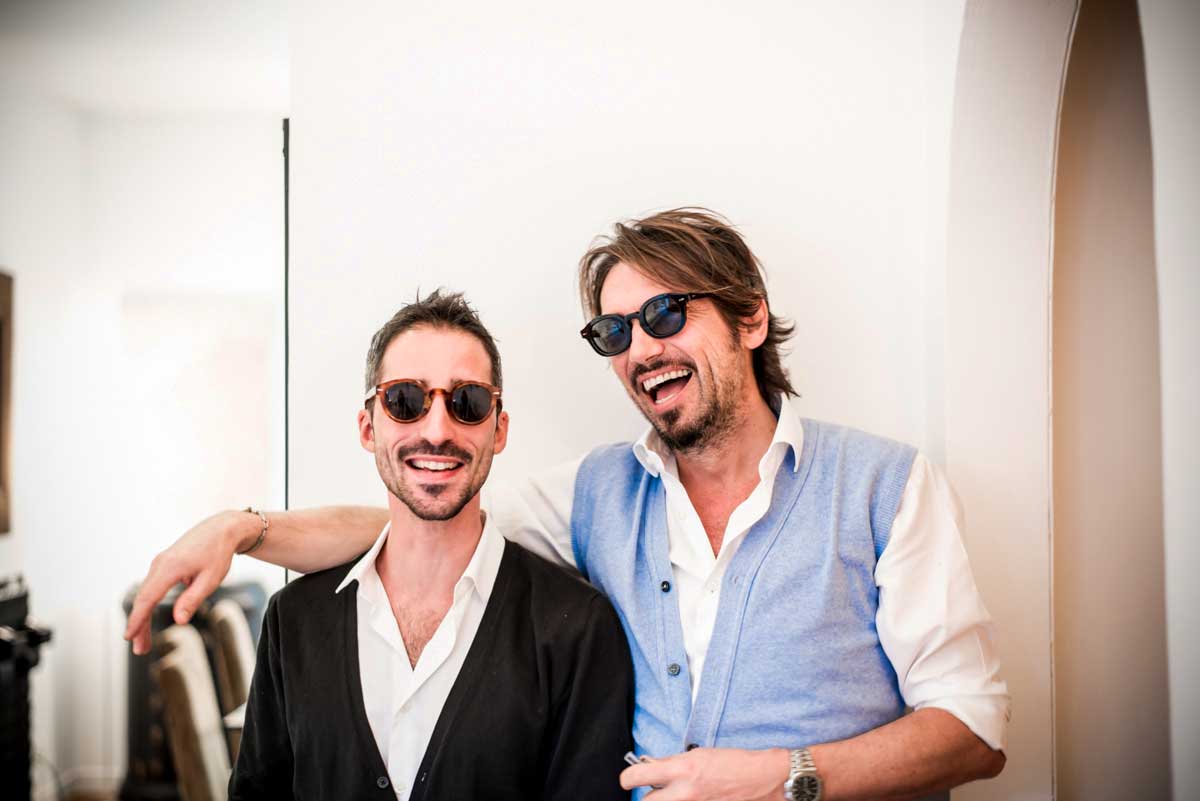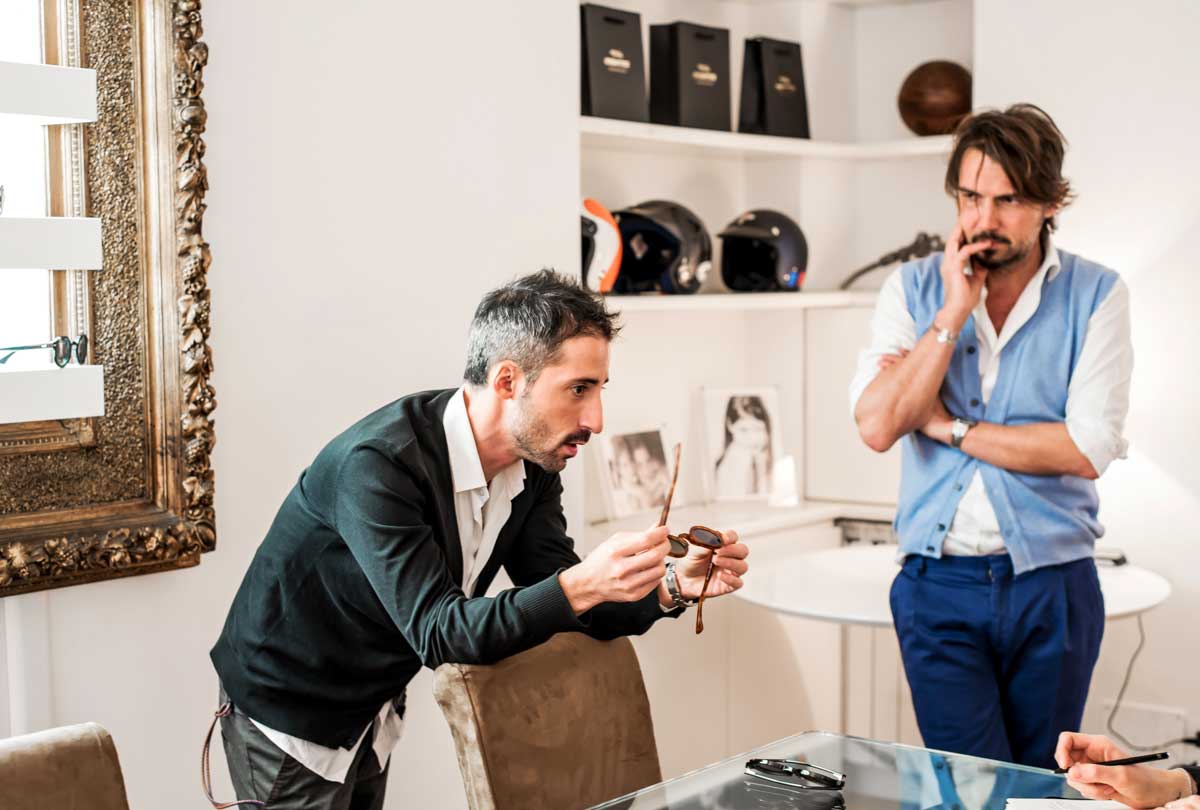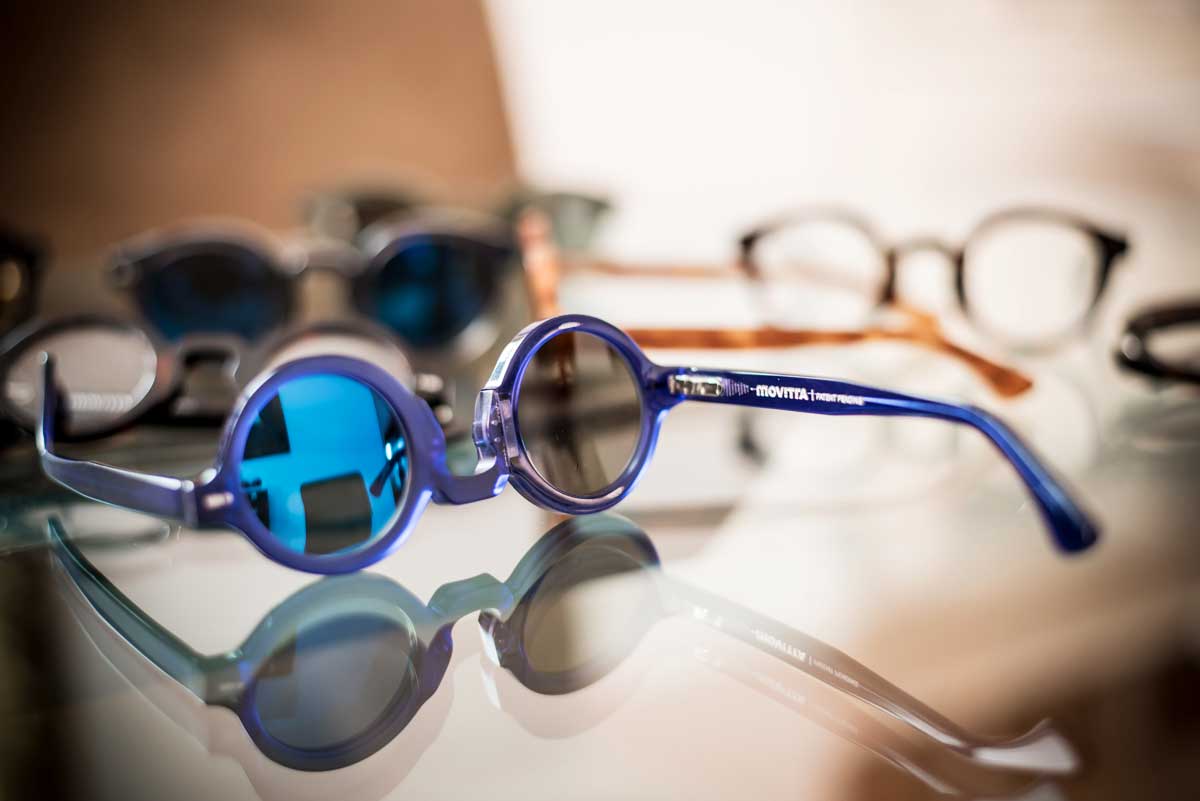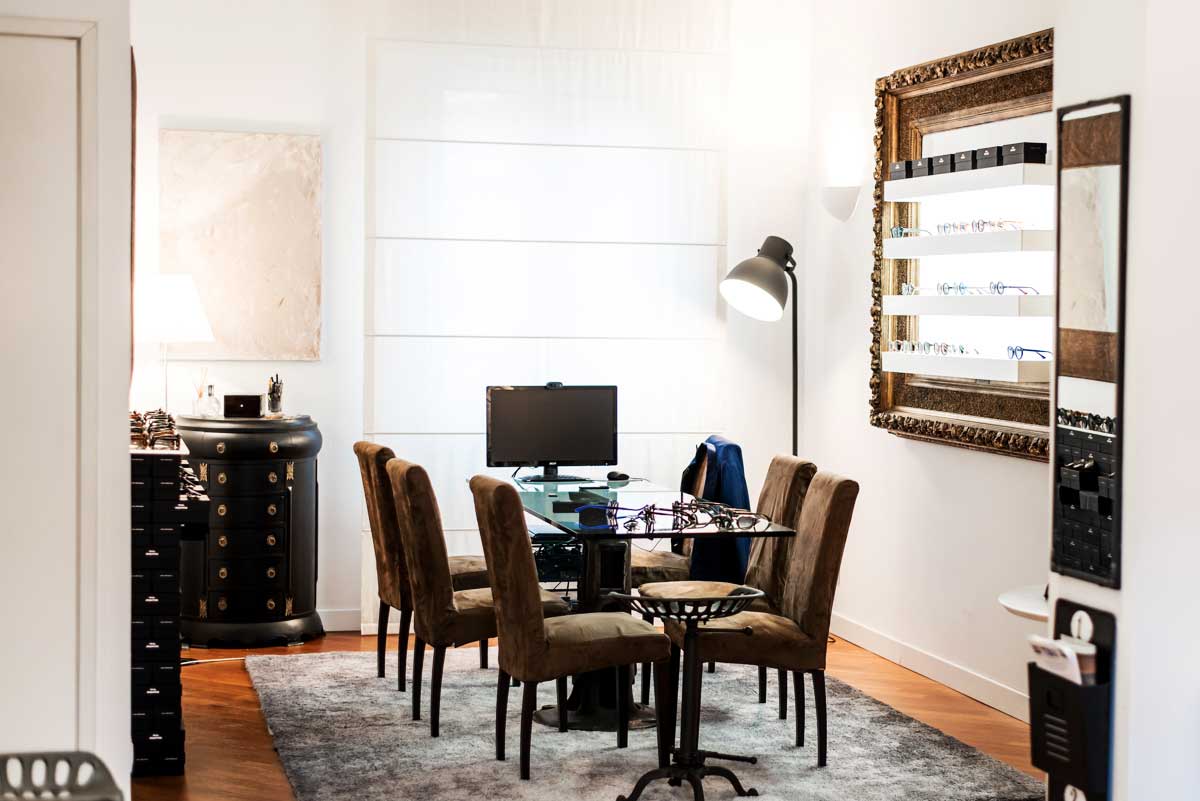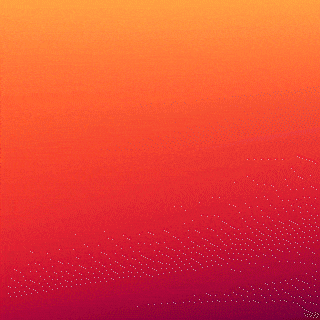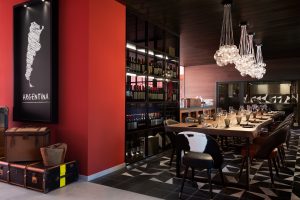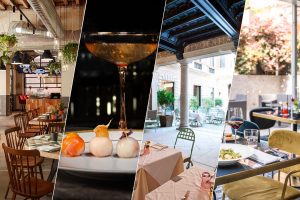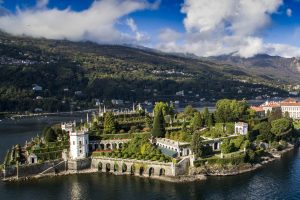Woman: the quintessential female that never leaves her house without a bag. Inside, you can find objects of varying degrees of usefulness, undoubtedly including a phone, keys, a wallet, cigarettes (if she smokes), and an infinite array of other items of her choice. Man: the quintessential male that never leaves his house without his wallet, phone, glasses or sunglasses, keys, and cigarettes, if he smokes.
Regardless of whether you’re a man or a woman, imagine never having to worry about the most expensive and at-risk item in your wardrobe: your glasses. Let me explain myself further. Inside the bag of a near-sighted woman (such as yours truly), a daily battle takes place. The objective is to preserve the only two fragile (and essential) things that she carries, her phone and her glasses, from the rest of the contents, which are usually all pointy: keys, nail files, hair clips, and so on. This almost always results in failure for two reasons: it’s impossible to avoid the inevitable, and the truth always wins out. The mobile home we transport always defeats our best intentions and prevents us from inserting delicate things. That’s how we end up going about our day carrying two-kilogram purses on our shoulders, cell phones (that are obviously already scratched) in our hands, and our glasses on our heads even when we aren’t wearing them, bending the frames out of shape and running the constant risk of leaving them in a café after getting a coffee with a friend.
This is why the story I’m about to tell you really struck a chord with me: it’s about a solution. The title is Movitra: Living Spectacles and the protagonists are the glasses themselves as you’ve never seen them before. Available for the first time ever: a patented rotation system that allows for total protection of the lenses. You take them, rotate one lens 180 degrees, close them, and you’re off. No matter how you position them, the lenses can never come in direct contact with the outside world because they’re protected by the frames. If you take all of this and add the best-in-class quality of Carl Zeiss Vision lenses, materials for the frame and mechanism that are Made in Italy, and the first worldwide patent protecting the idea, the result is assured. Or almost. The coup de grâce is the fashion content, already recognized by Vogue, available in three different shapes and combinations of colors between frames and lenses that will make it very difficult to pick. The price, however, won’t surprise you, because it’s completely in line with the product offered.
We’re meeting two of the founders, Filippo Pagliacci, President and C.E.O, and Giuseppe Pizzuto, brand manager, in their beautiful showroom. We really can’t wait to ask them some questions.
Hey guys, first of all, let me thank you for agreeing to do this interview and let you know how great your project is! We’re excited to ask you some personal questions and to get to know your point of view about our beloved city.
Can you tell us where you came up with this wonderful idea? Where did it all start? Why glasses?
The idea came to us when we were at the beach. We saw a friend drop her glasses when she picked up her child and the lenses shattered. That’s how we came up with idea of finding a practical way, without too many steps, of protecting the lenses. We filed our first patent and created the brand and the company not long after. Then, as we were working on the project, we came up with other ways to obtain the same result. That’s how the other patents came about. We chose glasses simply because the idea began with a pair of glasses. If it had started with a car, we probably would have wound up in that business! We definitely don’t lack courage. None of us had even a minimal knowledge of how the eyeglass world worked. But we threw ourselves head first into a winning idea, backed by the growing consensus that we were on the right track. Everyone we met, whether inside or outside the business, was very enthusiastic about our idea. And this really stimulated the growth of the company.
Where does the name Movitra come from?
The name comes from Latin. “Movere” and “Vitra.” Movement of the lenses. We wanted the concept of motion and transformation to be present starting from the name. Our glasses are alive, they are in motion, they transform. They’re also entirely Made in Italy. So we definitely couldn’t give them an English name. We’re Italian and proud of it. So looking to the origins of our language and of the idea that is at its basis seemed the most natural thing to do.
You were the first in a fiercely competitive world to have completely thrown out the rule book. How do you manage to think outside the box?
The simplest way to think outside the box is probably to be truly outside of it. So the easiest way to think outside the box is to be an outsider. None of us came from the world of eyewear. We all come from very different realities. I (Giuseppe) come from the world of communication. I worked as an art director in various Italian advertising agencies, including D’Adda, Lorenzini, Vigorelli, BBDO, Leo Burnett, and Tribe Communication, for many years. I (Filippo), on the other hand, spent some time as a legal consultant, then two other companies, one in the plastic industry and another that produced high quality men’s shoes. The other companies operate in completely different worlds and have completely different components. This is a big point of strength for us.
What factors are critical to the success of your brand?
Without a doubt the uniqueness of the innovation present in the frames. The extremely high quality of the best materials on the market. The fact that they are Made in Italy.
Who would you most like to see wear your glasses? For what occasion?
This is one of the most difficult questions to answer. It’s like asking a father how he would like his son or daughter’s ideal partner to be! A brand created from nothing is like a creature. And imagining a person, a character that contributes to the creation of its identity and that grows along with it is difficult. We believe that it will be something that happens naturally, but it’s still early. We have different ideas in this regard, but we still need to do a lot of work towards creating our own identity before we tie ourselves to someone in particular that already has an identity that’s too strong and imposing. There are a lot of risks.
When will you deem yourselves satisfied with this project? What are the next steps?
We already are. Every day, even more so. Everyone we met, whether inside or outside the business, was very enthusiastic about our idea. And this was a great stimulus for us. Probably, we’ll decide that we’re satisfied enough when we stop finding more things to be satisfied about. We hope that never happens. We have so many projects under development. You just have to think about the fact that we’re only on our first collection that only uses the lessons we learned from the first patent. We want to make lots of collections and we have other patents filed. But one thing at a time.
How else are you thinking of promoting the brand?
The first ways are definitely the web and social media, simply because they’re the most accessible instruments for a start-up to make themselves known. And this is one way that we are very lucky to be doing business at our age. Except Filippo, due to his age! Certainly as we move forward and increase our possibilities, we will expand the scope of our print advertising, which we think is always strategic and current, and without a doubt product placement, too. Our glasses are alive, they are in motion, and their natural environment, which is different from that of others, isn’t in being worn, nor in still life, but in video. So we’re aiming for TV and film. Then we’ll seize all the opportunities that we hope present themselves, that we think are the most correct, within our reach, and in line with our idea of the brand.
If you had to choose your favorite place for the following occasions:
Brunch. Giuseppe: Luca e Andrea, California Bakery. Filippo: Biancolatte.
Lunch. Giuseppe: Panino Giusto. Filippo: Ristorante da Giordano Il Bolognese.
Aperitif. Giuseppe: Deus Cafè, Pinch, and N’Ombra de Vin. Filippo: Leonardo Tommasi, Bulgari Hotel.
Shopping. Giuseppe: It obviously depends on what you’re looking for, on the style, and also on your wallet. Via Della Spiga, Sant’Andrea, Montenapoleone if you don’t know where to go and that’s your style. Or, alternatively, walk from Navigli, Corso di Porta Ticinese, via Torino until Vittorio Emanuele. If, on the other hand, you live in Milan and so you know some people that work in fashion, wait and ask them to invite you to the private sales! Filippo: Antonia, Excelsior to find a bit of everything, to browse. Then of course it always depends on your wallet and on the style that you’re looking for. I also like looking for vintage shops.
Dinner. Giuseppe: El Porteño or El Gaucho if you want meat. Temakinho or Nami if you want sushi. Al Garghet if you want a nice cutlet or a Milanese risotto. Filippo: If you want meat El Porteño, if you want sushi Qor or Iyo. If you like Emilian cuisine like I do, Il Ristorante da Giordano Il Bolognese. If you want to see someone from the jet-set crowd, Briciola and Mimmo.
A perfect evening: Giuseppe: Once upon a time, Exploit from aperitif to after dinner, then Punks wears Prada, Club Haus 80’s, Magazzini Generali, or one of the various Secret Parties, and then Plastic (the old one though!). Today my couch, a movie and a great glass of wine. I’ve already had my fun, now my body can’t take it! Filippo: At friends’ houses!
If a foreign friend of yours that had never been to Milan came to the city, what absolutely shouldn’t be missed?
Giuseppe: Taking a walk along Naviglio Grande on a spring day during the flower market (Fiori e Sapori) or the antiques fair. Or on a winter evening shrouded in fog. Stopping to eat and drink in one of the many bars, exploring the little shops and bookstores, peeking inside the courtyards of the banister houses. If they have another day, they can say hi to the Madonnina, take a trip through Brera, and see an opera at La Scala. After that, I think they can leave satisfied! Filippo: They can’t miss the Duomo, Santa Maria delle Grazie, or the Last Supper. A walk through the Navigli district and in the fashion quadrilateral to see a bit of everything.
A tip for our readers: your favorite hidden corner? Can you reveal it to us?
Giuseppe: The San Cristoforo sul Naviglio church. I’m not a religious fanatic or a devout Catholic. I just love its combination of majesty, humility, and tranquility. I find it to be a magical place, where I can take refuge and where I find peace. Filippo: There are so many places and special corners in Milan. You just have to look up while you’re walking and look around and you’ll find glimpses of utter beauty. We Milanese don’t do it often enough.
Thanks again and best of luck with all your projects! And a huge congratulations by Flawless Milano editorial team!


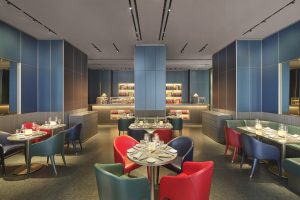 Emporio Armani Caffè e Ristorante
Emporio Armani Caffè e Ristorante  Alba White Truffle Fair
Alba White Truffle Fair 